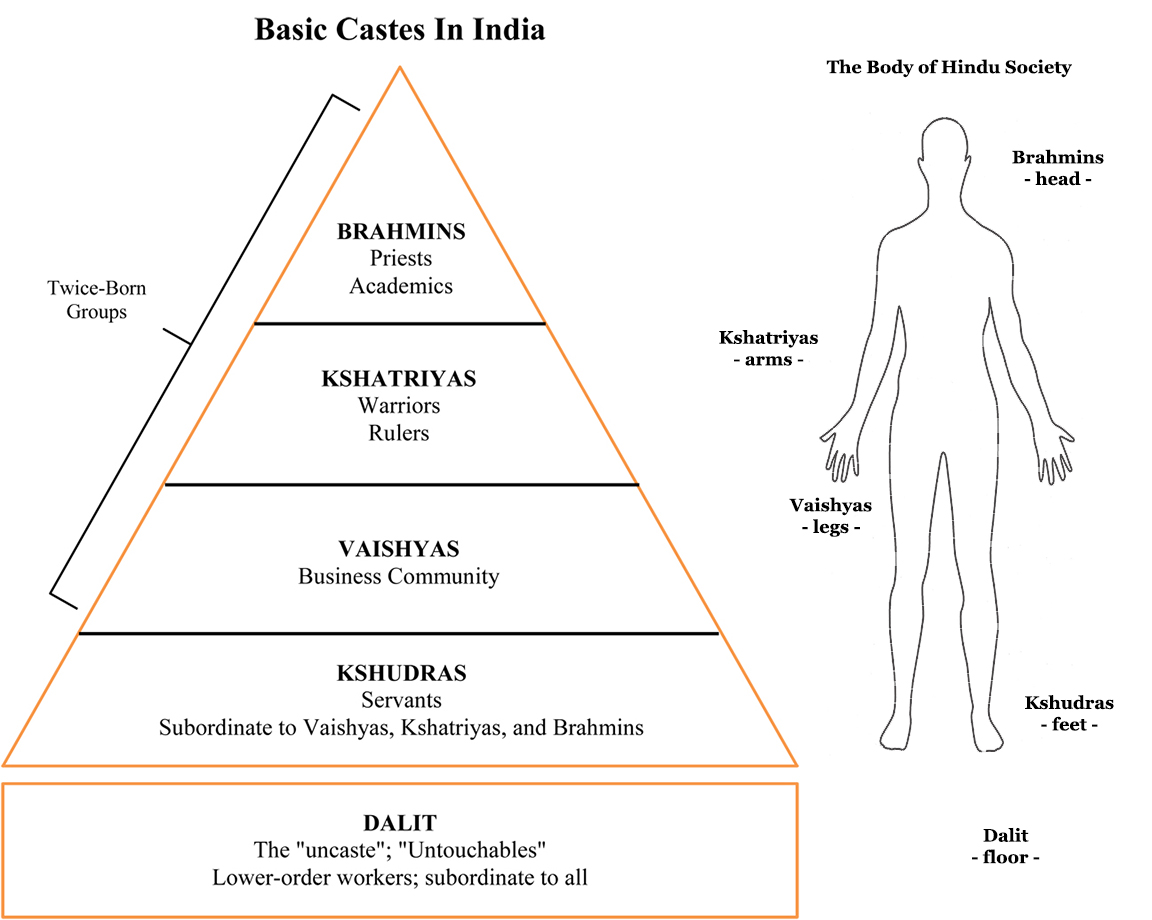Castes - An Oversimplified Overview

From The Bhagavad-Gita, chapter 18
translated by Ramananda Prasad
Those who have serenity, self control, austerity, purity, patience, honesty, transcendental knowledge, transcendental experience, and belief in God are labeled as intellectuals (Braahmans).
Those having the qualities of heroism, vigor, firmness, dexterity, not fleeing from battle, charity, and administrative skills are called leaders or protectors (Kshatriyas).
Those who are good in cultivation, cattle-rearing, business, trade, finance, and industry are known as businessmen (Vaishyas).
Those who are very good in service and labor-type work only are classed as workers (Shudras).
Caste Today
India's first constitution, in 1950, banned discrimination on the basis of caste. "Scheduled Castes" and "Scheduled Tribes," the lowest in the caste hierarchy (and thus historically disadvantaged) were addressed by the government through the creation of quotas in government jobs and educational institutions.
In 1989 these quotas were extended to include groups called the "OBCs" (Other Backward Classes), which fall between the traditional upper castes and the lowest. Altogether, the SCs, STs, and OBCs make up over 60% if India's current population. Their quotas stand now (2017) at 49%.
In urban areas, the influence of caste has declined, but it is still present. Governments may be able to change the law, but they cannot change the culture as easily. As recently as 2015 there were violent protests against the quota system